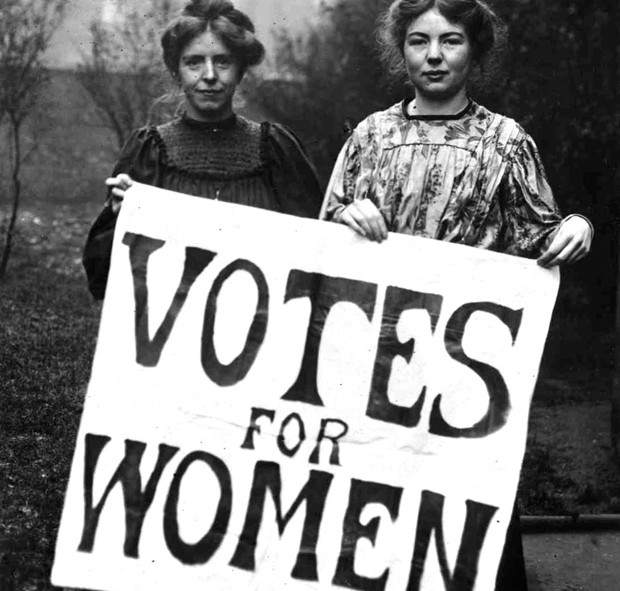
Tuesday afternoon trivia: Name two game-changing women who made history in Lawrence, Kansas.
You’re on your game if you guessed Dr. Lucy Hobbs Taylor, the first woman to earn a dental degree in the U.S., or Flora E. Richardson Coleman, the first woman to complete the curriculum and graduate from The University of Kansas.
Also correct answers: Numerous other female history-makers from the Sunflower state (think Amelia Earhart, Linda Brown, Gwendolyn Brooks, Lynette Woodard, Erin Brockovich).


Equality in education
The University of Kansas, founded in 1866, was co-educational from the start. By 1873, its inaugural graduating class contained another first: a female graduate of the school, Flora Ellen Richardson. Class valedictorian, Richardson took her place of honor on the stage with three other male graduates.

An early photo of The University of Kansas. (Photo courtesy The University of Kansas)
Pioneering woman
Born in Wisconsin on February 17, 1851, Richardson moved to Kansas with her parents, Asa and Phoebe, when she was 19. A student, taking classes at the University of Wisconsin, she later enrolled at Lombard University in Galesburg, Illinois, according to kuhistory.ku.edu.
In October, 1870, the Richardson family settled in Lawrence, Kansas and Flora took her first classes at KU the following spring, alongside her brother George. She returned to Lombard in the fall, but something about her KU experience convinced her that her educational future lay not in Illinois, but in Kansas. In February, 1872 she returned to Lawrence and enrolled in the University as a full-time student, joining her brother Albert (who, like George, did not graduate).

Flora Ellen Richardson, first female graduate at The University of Kansas in 1873. (Photo courtesy The University of Kansas)
She was not the first female student at the University. A number of young women attended before her, including several in the very first batch of students in 1866, but none reached graduation. Richardson became the first woman to complete the curriculum.
Her earlier studies at the other colleges must have gone well, for she entered the University of Kansas as a junior. She also was involved in several social clubs in the school, becoming a well-rounded student. She belonged to a literary society and was a founding member of a sorority.

After receiving her diploma, she found work as a mathematics teacher in a local high school, one of the few occupations open to women at the time. But she wasn’t nearly done. Richardson earned her Master of Arts degree from The University of Kansas in 1875. She also married Osgood Coleman that year.
Despite all of her achievements (Richardson engaged in some post-graduate study, joined a national book club and earned another degree through home study), she was still constricted by the Victorian gender norms of the time. Between 1875 and 1887, she gave birth to seven children. She was active in the women’s suffrage movement, in children’s issues, schools for rural children and the betterment of life for rural farm women.

Photo courtesy Findagrave.com
Flora E. Richardson Coleman died in Lawrence on November 19, 1924.
Today, nominate an outstanding woman in dentistry
Share a Lucy Hobbs Project Award nomination before the July 1, 2021 deadline: https://www.judgify.me/LHP-nominations2021
Annually, Benco Dental pays tribute to the first woman in the U.S. to receive a dental degree – Dr. Lucy Hobbs — by honoring six pioneering women in the dental profession with an award created in her name: The Lucy Hobbs Project™ Awards.
The dental community is invited to honor award recipients in six categories:
- Woman to Watch: An up-and-coming leader who utilizes her position to create positive change,
- Industry Icon: A trailblazer who is consistently recognized and admired for her work in dentistry,
- Mentor: An advisor who recognizes the importance of supporting, educating and encouraging others,
- Innovator: A groundbreaker who demonstrates a willingness to implement new technologies and business processes without fear of potential failure,
- Humanitarian: An altruist who works tirelessly for a cause that benefits the well-being of others, and
- Clinical Expert: A skillful practitioner who embraces advancements and integrates them into patient care.
Individuals and organizations are invited to submit nominations. Self-nominations are accepted.
COMING SOON:
March is Women’s History Month
As Dr. Lucy Hobbs Taylor and Flora E. Richardson Coleman took progressive steps for women, so have many others. Honor them and learn more during Women’s History Month, here: https://womenshistory.si.edu/
The Library of Congress, National Archives and Records Administration, National Endowment for the Humanities, National Gallery of Art, National Park Service, Smithsonian Institution and United States Holocaust Memorial Museum join in commemorating and encouraging the study, observance and celebration of the vital role of women in American history.
The post Ruby slippers not required. Progressive women who made history in Kansas. #gratiTuesday appeared first on The Daily Floss Blog | Benco Dental.



